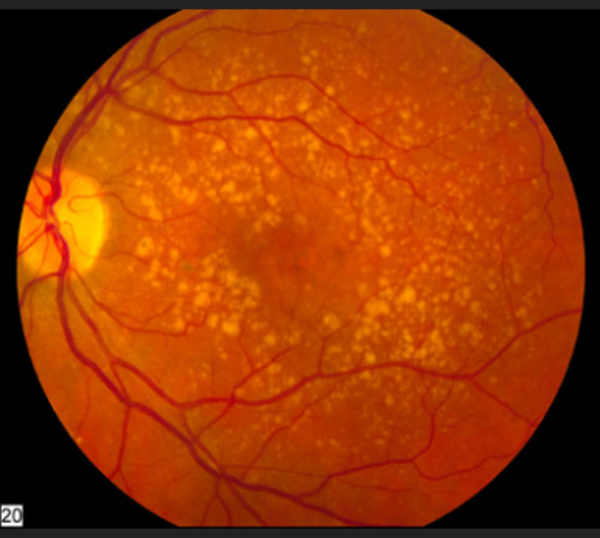Photovoltaic polymer restores some vision to rats with retinal degeneration
Ars Technica » Scientific Method 2017-03-12

The yellow spots in this image are sites of retinal degeneration. (credit: NIH)
In most cases of blindness, the majority of the eye is intact. The problem lies in the layer of light-sensitive cells in the back of the eye, called the retina. A variety of diseases lead to the degeneration of the retina, and vision decays along with it, even though the nerves that would take signals from the retina to the brain remain intact.
There have been many ideas on how to use those nerves to restore some level of vision to people with retinal degeneration. These range from biological (using genetic engineering to make other nerve cells in the eye responsive to light) to electronic (using an external camera to send signals to an implant that activates the nerves). This week, researchers from Italy have reported something somewhere between the two: a photovoltaic polymer that acts as a replacement retina, no wires required.
The design of the new device is remarkably simple. The authors started with silk since it provides a biocompatible material that cells can grow around and attach to. On top of that, they layered a conductive polymer [poly(3,4-ethylene- dioxythiophene)-poly(styrenesulfonate)]. And on top of that, they added an organic semiconductor—poly(3-hexylthiophene)—that acts as a photovoltaic material under ambient light conditions. When implanted in the retina, incoming light would lead to a local buildup of charge, which should cause the underlying nerve cells to fire.